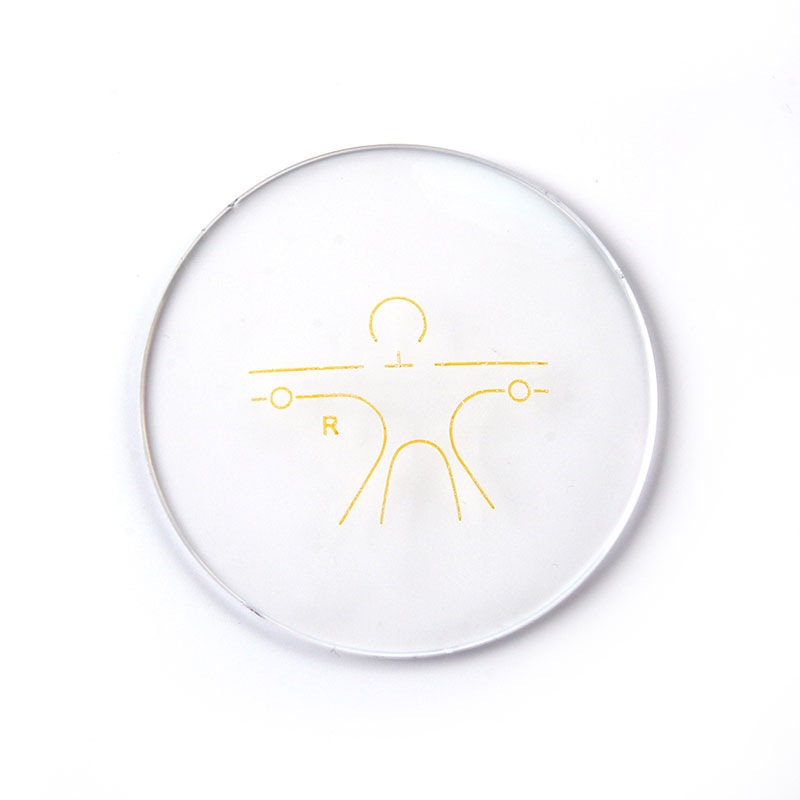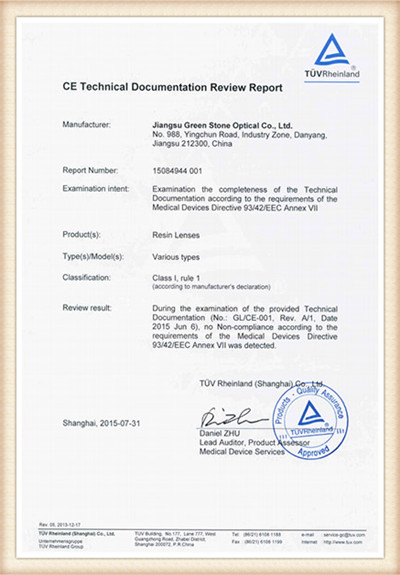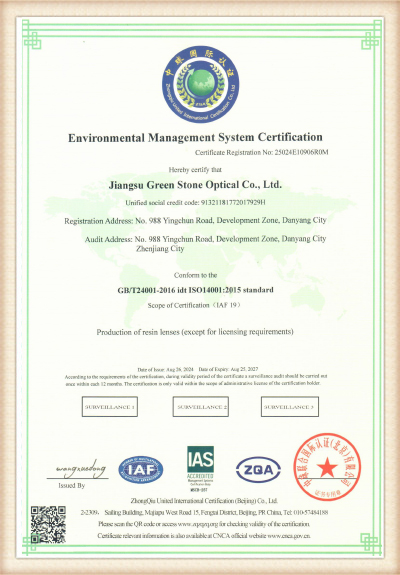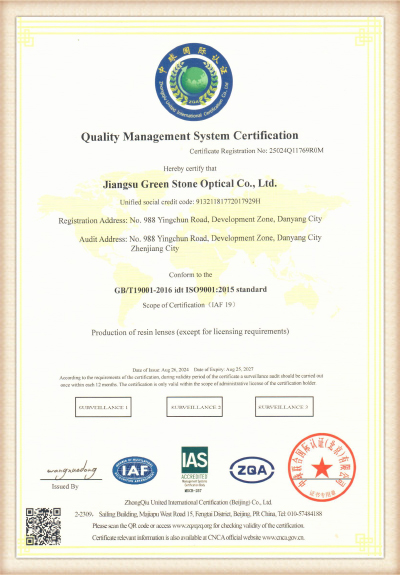Semi-Finished Lenses are the cornerstone of customized prescription (Rx) eyewear in the optical industry. For eyewear professionals, a deep understanding of the structure, function, and positioning of SFLs within the supply chain is essential for providing high-quality dispensing services. What are Semi-Finished Lense...
READ MORE
Product Series
Bifocal/Progressive Lens Manufacturers
-


1.499 Bifocal Flat Top Lens
the flat top bifocal is one of the easiest multifocal lens to adapt to... -
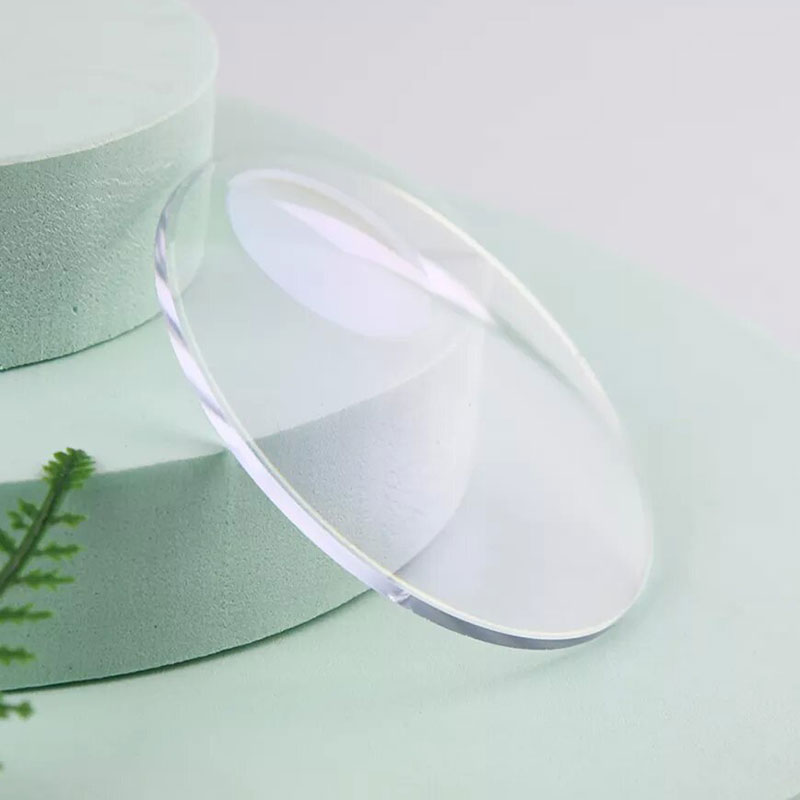

1.499 Bifocal Round Top Lens
Bifocal lens can be called a multi purpose lens. It has 2 different fi... -


1.56 Bifocal Round-Top Lens HMC
As the name suggests, the round bifocal is round at the top. They were... -
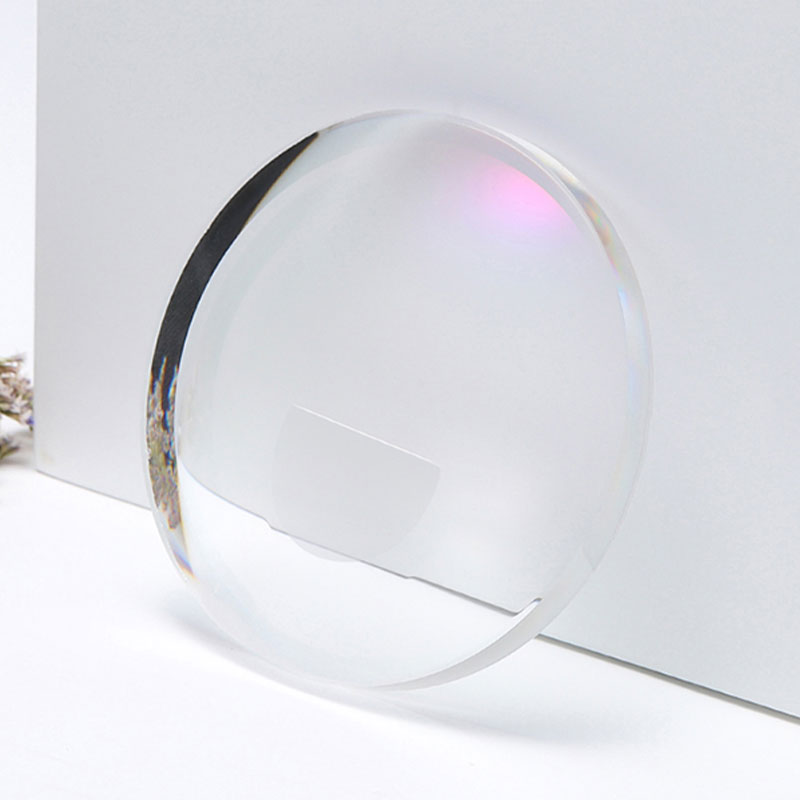

1.56 Bifocal Flat-Top Lens HMC
When a person loses the ability to naturally change the focus of eyes ... -
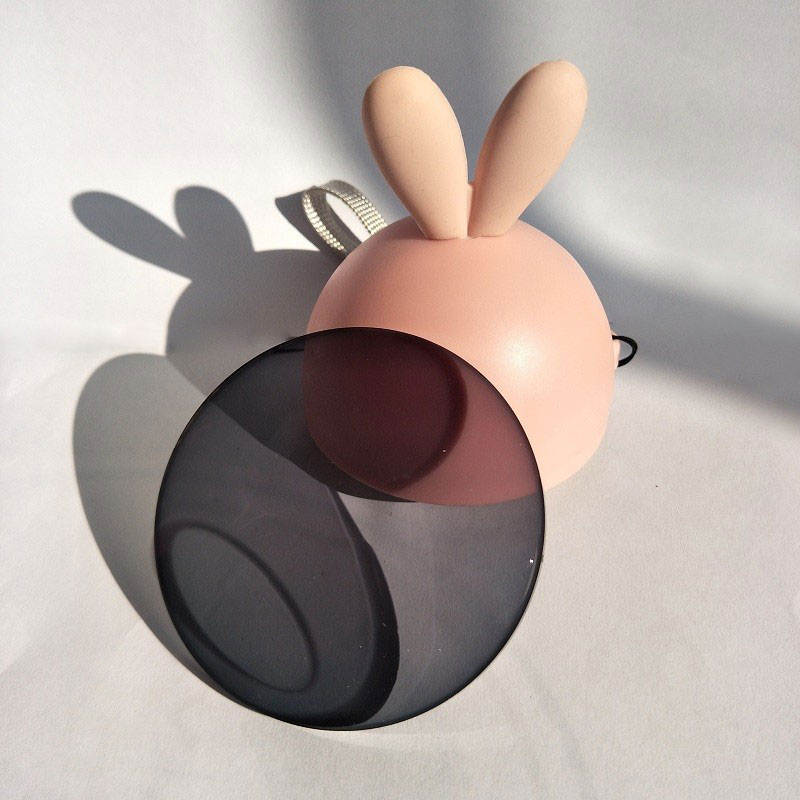

1.56 Bifocal Photochromic Round Top Lens HMC/SHMC
As the name suggests the round bifocal is round at the top. They were ... -


1.56 Bifocal Photochromic Flat Top Lens HMC/SHMC
When a person loses the ability to naturally change the focus of eyes ... -
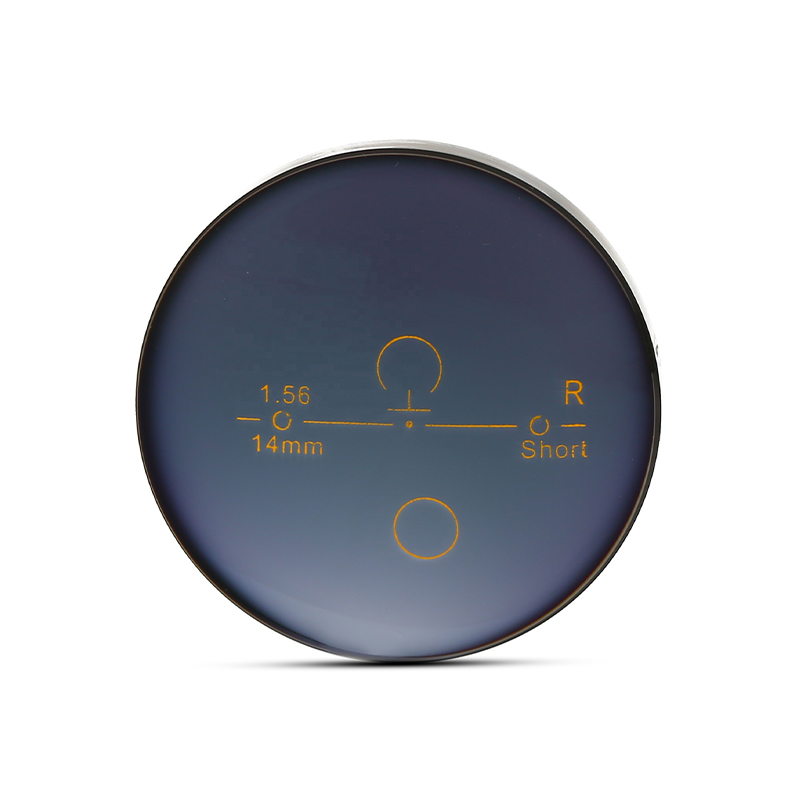

1.56 Photochromic Progressive Lens HMCSHMC
Photochromic progressive lens is the progressive lens designed with “p... -
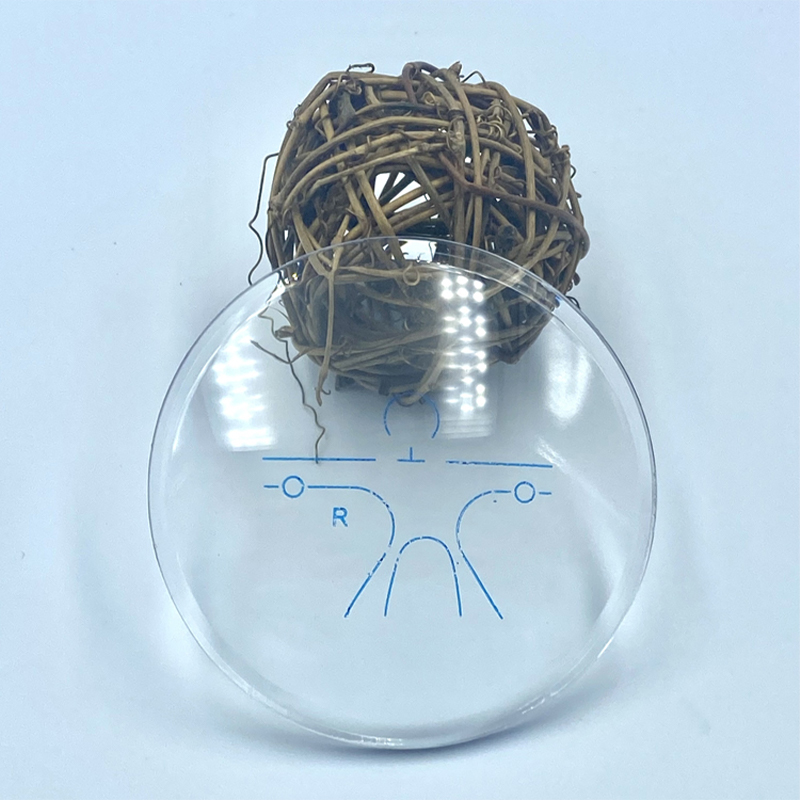

1.59 Blue Block PC Progressive Lens HMC/SHMC
PC lens have high resistance to breakage which makes them ideal for al... -
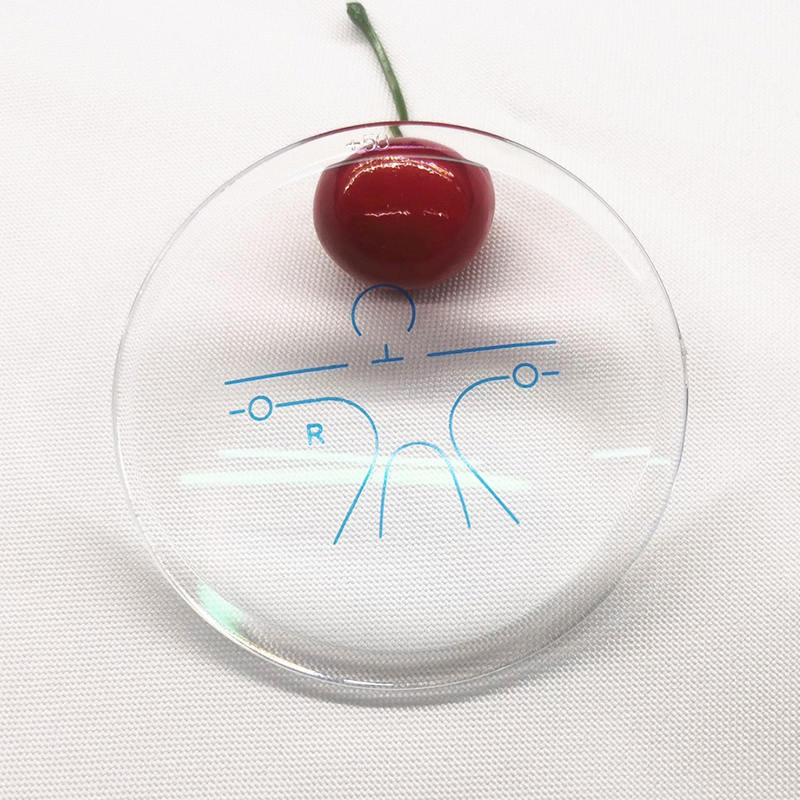

1.59 PC Progessive Lens HMC/SHMC
PC lens, also known as “space film”, because of its excellent impact r...
Bifocal/Progressive Lens is a multifocal vision solution commonly used in modern glasses, designed to provide users with clear vision at different distances. Bifocal lenses use the traditional bifocal design and are divided into two parts: farsightedness and nearsightedness. The upper part is designed for long-distance vision, while the lower part is used for close-up reading. This simple design was once widely popular for its economy and ease of use. However, the obvious dividing line in the lens may cause visual abruptness, especially when the wearer frequently switches between viewing distances, which may cause discomfort.
Compared with bifocal lenses, progressive lenses represent a more advanced optical design. Its most notable feature is that the lenses have no obvious dividing line, but a smooth transition of vision is achieved through progressive optical design. This design allows the wearer to switch between different viewing distances freely, from long distance to near distance, and even including medium distance, to obtain a clear visual experience. Progressive lenses effectively solve the dividing line problem of bifocal lenses, avoid the abrupt visual conversion between different focal lengths, and thus provide a more natural visual experience.
Progressive lenses are particularly suitable for users who need to frequently switch between multiple distances. For example, wearers who use computers for long periods of time, read or drive can benefit from the design of progressive lenses.
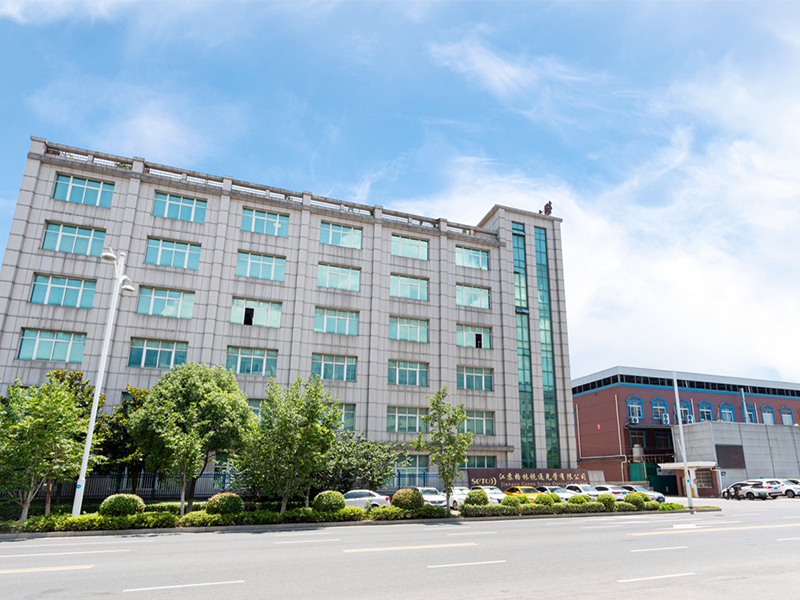
Our lens products involves almost all types of lenses. Product range covers 1.499, 1.56, 1.60, 1.67, 1.70 and 1.74 index, including single vision,bifocal, progressive, blue cut, Photochromic, blue cut photochromic, Infrared cut etc. with HC, HMC and SHMC treatment. Besides finished lens, We also manufactures semi-finished blanks. The products are registered with CE&FDA and our production certified by ISO9001& ISO14001 standards.
We positively introduce excellent management technology, comprehensively import Corporate Identity System and enhance the external image of company and brand.
-
-
Introduction to Core Concepts: The Purpose of Polarized and Photochromic Lenses Advanced lens technologies are designed to enhance visual comfort and protect the eyes from harmful light. Among the many high-quality options, Polarized Lenses and Photochromic Lenses are two of the most popular choices, yet they address d...
READ MORE -
Introducing Normal Lenses and Defocus Lenses In the fields of optics and image capture, the lens is a core component responsible for guiding and shaping light to form an image on a sensor or retina. While all lenses are based on the same laws of physics, their design goals and final effects can vary widely. This articl...
READ MORE
What is the Essential Difference in Optical Design Between Bifocal and Progressive Lenses?
In the modern optical lens market, Bifocal Lenses and Progressive Lenses are two important categories of lenses designed to meet different vision needs. As a professional optical lens manufacturer integrating R&D, production, and sales, Jiangsu Green Stone Optical Co., Ltd. has long been committed to providing high-quality optical lens solutions to global customers. Before delving into the essential differences in the optical design of bifocal and progressive lenses, it is necessary to clarify the fundamental distinctions between these two types of lenses in terms of design purpose and use scenarios.
Bifocal Lens Design Concept
The design concept of bifocal lenses stems from traditional optical requirements. They satisfy the vision needs for distance and near by dividing the lens into two fixed focal areas. Typically, the upper part of the lens is the distance vision area, and the lower part is the near vision (reading) area, with a clear boundary line between the two. This design is simple, easy to manufacture, and wearers can quickly adapt to the visual needs for different distances. However, the drawbacks of bifocal lenses are also obvious: due to the presence of the dividing line, a “jump” in vision can occur when the sight crosses the boundary. Furthermore, the intermediate vision zone is almost completely missing, which causes discomfort when viewing computers or objects at medium distances.
Progressive Lens Design Concept
In contrast, progressive lenses adopt a more complex optical design concept. Through precise calculation, they seamlessly connect the three focal zones—distance, intermediate, and near—to form a continuously changing refractive power curve, also known as the “progression corridor.” This design not only solves the issue of the dividing line in bifocal lenses but also significantly enhances visual comfort for intermediate distances. The optical design of progressive lenses involves multiple parameters, including the length of the progression corridor, the position of the center of eye rotation, fitting height, and distortion control in different directions of gaze. In the production process, especially for high-index materials (such as 1.67, 1.70, 1.74) and special functional treatments (such as anti-blue light, photochromic, blue-light photochromic, anti-infrared), more precise processing equipment and algorithms are required to ensure the wearer achieves a smooth and natural visual experience.
Jiangsu Green Stone Optical Co., Ltd. Production Standards
Within the production system of Jiangsu Green Stone Optical Co., Ltd., we possess a 65,000-square-meter production base and over 350 professional employees, and have introduced a full set of advanced optical processing equipment and molds. For both bifocal and progressive lenses, we can achieve precise control over various surface treatments such as HC (Hard Coating), HMC (Multi-Coating), and SHMC (Super-Hydrophobic and Oleophobic Multi-Coating), ensuring the lenses excel in visual quality, wear resistance, and protective performance. Especially in the design of progressive lenses, through our independently developed molds and digital processing technology, we precisely match different refractive index materials with complex optical curves. This allows the lenses to accommodate all three viewing distances—distance, intermediate, and near—while minimizing visual distortion and improving wearing comfort.
What are the Advantages and Limitations of High Refractive Index Lenses in Bifocal and Progressive Lenses?
In modern optical lens manufacturing, High Refractive Index Lenses are a crucial choice for both Bifocal Lens and Progressive Lens designs due to their thin, elegant appearance and excellent optical performance. As a professional optical lens manufacturer integrating R&D, production, and sales, Jiangsu Green Stone Optical Co., Ltd. is dedicated to providing high-quality, high-performance optical solutions to the global eyewear industry. By deeply understanding the advantages and limitations of high-index lenses in bifocal and progressive lenses, customers can more scientifically select the lens type that meets their needs, thereby enhancing the end-user wearing experience.
Advantages: Thinness, Lightness, and Aesthetics
Firstly, in terms of optical design advantages, the greatest characteristic of high-index lenses is their ability to achieve a thinner and lighter lens for the same prescription. For wearers with high myopia or hyperopia, traditional low-index lenses (such as 1.499 or 1.56) are often thick and heavy with noticeable edge protrusion. High-index lenses (1.67, 1.70, 1.74) can significantly reduce lens thickness, improving wearing comfort and aesthetics. For bifocal lenses, this means the boundary between the distance and near vision areas is smoother, and the overall weight of the lens is reduced, preventing extra burden during long periods of reading or distant viewing. For progressive lenses, high-index material maintains the complex progression corridor design while reducing lens thickness, thereby minimizing visual distortion and improving wearing comfort, with the advantage being even more pronounced in high-prescription progressive lenses.
Advantages: Compatibility with Functional Coatings
Secondly, high-index lenses excel in compatibility with functional coatings. Jiangsu Green Stone Optical Co., Ltd.'s products cover treatments such as HC (Hard Coating), HMC (Multi-Coating), and SHMC (Super-Hydrophobic and Oleophobic Multi-Coating), as well as multi-functional lenses including anti-blue light, photochromic, blue-light photochromic, and anti-infrared. Due to their excellent optical refractive performance, high-index materials highly match various functional coatings, allowing the lenses to achieve multiple protections against reflection, scratches, stains, and harmful light, thereby enhancing the overall performance of bifocal and progressive lenses and providing users with a clearer, more comfortable, and safer visual experience.
Limitations: Chromatic Aberration and Processing Requirements
However, high-index lenses also have certain limitations in application. Firstly, because the refractive index of the material is higher, the lens's Abbe number (chromatic dispersion) is also relatively increased, which can easily lead to chromatic aberration. In bifocal lenses, this may cause a slight color shift at the boundary of the distance and near vision zones, affecting the experience of some visually sensitive users. In progressive lenses, if the progression corridor design is not precise enough, chromatic aberration may exacerbate peripheral distortion or cause the intermediate vision transition to be less smooth. Therefore, high-index lenses require higher precision in optical design and processing technology. Jiangsu Green Stone Optical Co., Ltd., with its 65,000-square-meter modern production base, over 350 professional employees, and a full set of advanced processing equipment and molds, can precisely control the optical curve and progression corridor design of high-index lenses, minimizing chromatic aberration and distortion to the greatest extent possible, and improving the visual quality and wearing comfort of the finished lenses.
Limitations: Higher Cost and Value Proposition
Another limitation is that the cost of high-index lenses is relatively higher, which places higher demands on eyewear manufacturers and distributors regarding pricing strategies. Despite this, given the advantages of high-index lenses in aesthetics, lightness, and visual experience, the value proposition remains highly significant, especially among high-prescription users. For businesses looking to enhance brand competitiveness and customer satisfaction in the bifocal and progressive lens markets, high-index lenses are an indispensable product choice.
What are the Common Issues for First-Time Progressive Lens Wearers?
Progressive Lenses, with their “seamless multifocal transition” design concept, can simultaneously meet vision needs for distance, intermediate, and near, making them one of the most popular lens types in the modern eyewear market. However, first-time progressive lens wearers often encounter some common visual and wearing-related issues during the adaptation process. As a professional optical lens manufacturer integrating R&D, production, and sales, Jiangsu Green Stone Optical Co., Ltd. has long focused on the R&D and production of high-quality progressive lenses, providing solutions that are easier for first-time wearers to adapt to, thanks to advanced optical design and precise processing technology. Below is a detailed professional analysis of these common issues and their causes.
1. Visual Blurring or Jumps
Upon first wearing progressive lenses, some users may experience blurring during the transition between distance and near vision zones, or a slight jump in vision when moving the line of sight up, down, or sideways. This mainly stems from the continuous change in the progressive lens's refractive power along the vertical direction; if the wearer fails to accurately align the eyeball with the progression corridor, momentary discomfort can occur. In the design process of Jiangsu Green Stone Optical Co., Ltd.'s progressive lenses, through precise control of the progression corridor length, center of eye rotation, and refractive power transition curve, the visual transition between the three focal points—distance, intermediate, and near—is more natural, significantly reducing jumps and blurring, and speeding up the adaptation process for first-time wearers.
2. Intermediate Vision Discomfort
Many first-time wearers report that vision in the intermediate distance area is not clear enough when using a computer, working at a desk, or operating in the kitchen. This is because the length of the progression corridor and the width of the intermediate vision zone vary between different progressive lenses. If the design does not fully consider the user's work and life scenarios, the intermediate vision area may be too narrow. Jiangsu Green Stone Optical Co., Ltd. offers various progressive lens series that can be customized according to different wearers' habits, pupillary distance, and fitting height, ensuring the intermediate vision zone is sufficiently wide, making office work, reading, and daily tasks more comfortable and natural.
3. Eye Strain and Head Posture Adjustment
Some first-time wearers may experience eye strain or the need to constantly adjust their head posture to achieve clear vision when wearing progressive lenses. This typically relates to the distortion control in the progressive lens design and the wearer's habits. High-quality progressive lenses undergo precise curve calculations during the production process for various refractive index materials (such as 1.56, 1.60, 1.67, 1.70, 1.74), along with multi-coating treatments like HC, HMC, and SHMC, to minimize peripheral lens distortion and improve visual comfort. The professional R&D team at Jiangsu Green Stone Optical Co., Ltd. can perform personalized customization based on the user's prescription and pupil height data, helping wearers adapt to the new lenses quickly and reducing eye strain.
4. Difficulty in Adjusting Spatial Sense and Depth of Field
When first wearing progressive lenses, users may feel slight spatial disorientation or difficulty judging depth of field. This is because progressive lenses have changes in optical curvature in both horizontal and vertical directions, and wearers need a period of adaptation to learn to correctly rotate their eyeballs and adjust their head angle. In the progressive lens design, Jiangsu Green Stone Optical Co., Ltd. combines digital processing technology with high-index materials (such as 1.67, 1.70, 1.74) to optimize the progression corridor curvature and the visual transition zone, making the perception of depth of field more natural and helping first-time wearers adapt to the lenses faster.
5. Adaptation Time Varies by Individual
The adaptation time for progressive lenses varies among individuals; generally, first-time wearers need 1–2 weeks or even longer to fully adapt. During this period, some users may experience slight dizziness or visual instability. The progressive lenses provided by Jiangsu Green Stone Optical Co., Ltd. ensure excellent optical performance through scientific optical design, precise processing technology, and multi-coating treatment. They also come with detailed wearing instructions to help first-time users successfully complete the adaptation period and experience clear, comfortable, and seamless visual effects.
What Precision Processing Technologies are Used for Bifocal and Progressive Lenses?
In the modern eyewear industry, Bifocal Lenses and Progressive Lenses are widely used because they can meet multifocal visual demands. With the increasing consumer demand for visual comfort, thinness, aesthetics, and functional lenses, precision processing technology has become particularly important in lens production. As a professional optical lens manufacturer integrating R&D, production, and sales, Jiangsu Green Stone Optical Co., Ltd. owns a 65,000-square-meter modern production base and over 350 professional employees. By introducing a full set of advanced processing equipment, new production technologies, and high-precision molds, we provide high-quality bifocal and progressive lenses to global customers. Below is a detailed professional analysis of the precision processing technologies for these lenses and their advantages.
1. High-Precision Digital Design and Mold Manufacturing
The processing of bifocal and progressive lenses first relies on accurate optical design. Although traditional bifocal lenses have a relatively simple structure, the height, width, and dividing line position of the distance and near vision zones need to be precisely calculated based on the user's pupillary distance, fitting height, and prescription. Progressive lenses are more complex, involving the continuous transition of the three focal points—distance, intermediate, and near—as well as the optimization of the progression corridor length, distortion control, and visual comfort. Jiangsu Green Stone Optical Co., Ltd. utilizes advanced digital optical design software and high-precision mold manufacturing technology to precisely parameterize the curve, progression corridor, and zone parameters of each lens. This achieves a high degree of personalization and customized processing, providing an ideal visual experience for different user groups.
2. Digital Polishing and CNC Precision Machining
In the lens manufacturing process, CNC (Computer Numerical Control) precision machining is a critical step. Bifocal lenses are precisely cut for the dividing line and adjusted for the refractive power of the distance and near vision zones via CNC processing, ensuring each lens meets the design parameters. Progressive lenses rely on multi-axis CNC machining and polishing technology to achieve the smooth curve of the progression corridor and complex optical curves. Jiangsu Green Stone Optical Co., Ltd.'s production line is equipped with advanced CNC processing equipment, which can perform precision machining for various refractive indices (1.56, 1.60, 1.67, 1.70, 1.74) and materials (such as resin, high-index materials), ensuring the optical precision and visual comfort of the finished lens.
3. Optical Surface Measurement and Correction Technology
After lens processing is complete, the accuracy of the optical curve directly affects the wearing experience. Bifocal lenses need to ensure a smooth transition between distance and near vision areas, while progressive lenses require continuous progression corridor curvature and minimal distortion. Jiangsu Green Stone Optical Co., Ltd. employs high-precision optical measuring instruments to inspect each lens, including refractive power, progression corridor curve, surface flatness, and distortion analysis. Through a digital feedback and correction system, every lens is ensured to meet design standards, reducing the adaptation difficulty for first-time wearers and enhancing visual clarity and comfort.
4. Multi-Coating Treatment and Surface Hardening Technology
Precision processing is not limited to the optical curve; it also includes surface treatment. Bifocal and progressive lenses undergo treatments such as HC (Hard Coating), HMC (Multi-Coating), and SHMC (Super-Hydrophobic and Oleophobic Multi-Coating). These not only enhance the lens's wear resistance, anti-stain, and anti-reflection properties but are also compatible with functional lenses like anti-blue light, photochromic, blue-light photochromic, and anti-infrared. Jiangsu Green Stone Optical Co., Ltd. uses advanced coating equipment to achieve uniform and strongly adhering film layers, allowing the performance of high-index lenses to be fully realized after precise optical processing, thus ensuring long-term visual effects and lens durability for the user.
5. Semi-Finished Blank Processing and Personalized Customization
To meet the needs of different customers, Jiangsu Green Stone Optical Co., Ltd. also produces semi-finished blanks. Through precision processing technology, these semi-finished blanks are processed into final finished lenses, ensuring high-quality optical curves while also achieving customization needs. During the lens processing, the progression corridor design can be adjusted based on the user's pupillary distance, fitting height, prescription, and usage scenarios, providing targeted solutions that optimize the wearing comfort and visual effect of the lens.



 English
English Español
Español
